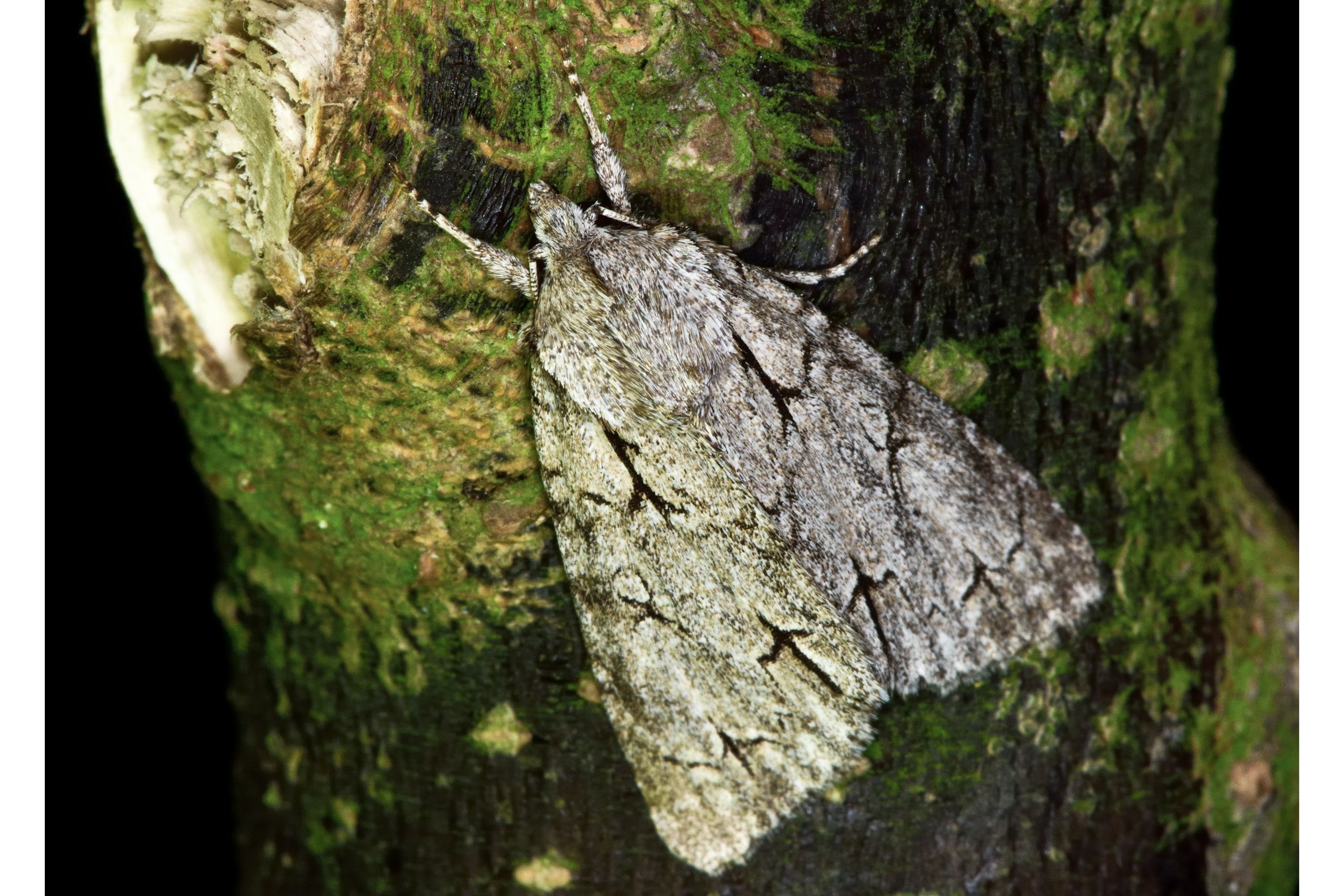Grey dagger
(Acronicta psi)

Description
The grey dagger (Acronicta psi) is a moth of the family Noctuidae. This species can be found from Europe and North Africa to northern Iran, central Asia, southern and central Siberia and Mongolia. In the Levant it is found in Lebanon and Israel. These moths mainly inhabit deciduous forests, hedgerows, parks and gardens, at an elevation up to 1,600 metres (5,200 ft) above sea level. Acronicta psi has a wingspan of 34–45 mm. These moths have grey forewings with bold black dagger-shaped markings. (The Latin specific name also refers to these markings, as resembling the Greek letter psi.The hindwings are dirty grey, generally paler in the male. This moth is very similar to the dark dagger (Acronicta tridens) and identification is generally only possible by minute examination of the genitalia. See Townsend et al. However, in general this moth is generally darker in colour than the dark dagger and always lacks the white hindwings often present in the male of that species. Moreover, the larvae of the two species are very different. The larva of Acronicta psi is quite hairy, greyish or brownish below and black above, with red spots along the sides and a bold yellow stripe along the back. It has a distinctive horn just behind the head (absent from the larva of dark dagger). Acronicta is a genus of noctuid moths containing about 150 species distributed mainly in the temperate Holarctic, with some in adjacent subtropical regions. The genus was erected by Carl Linnaeus in his 1758 10th edition of Systema Naturae. Caterpillars of most Acronicta species are unmistakable, with brightly colored hairy spikes, and often feed quite visibly on common foliate trees. The hairy spikes may contain poison, which cause itchy, painful, swollen rash in humans on contact. The larva of the smeared dagger moth (A. oblinita) is unusually hairy even for this genus. Acronicta species are generally known as dagger moths, as most have one or more black dagger-shaped markings on their forewing uppersides. But some species have a conspicuous dark ring marking instead. Its eyes are naked and without eyelashes. The proboscis is fully developed. Antennae are simple in both sexes. Thorax and abdomen tuftless. Abdomen with long coarse hair on the dorsal part of proximal segments. Legs spineless. Forewings with non-crenulate cilia. Inner margin slightly lobed towards base.
Taxonomic tree:







